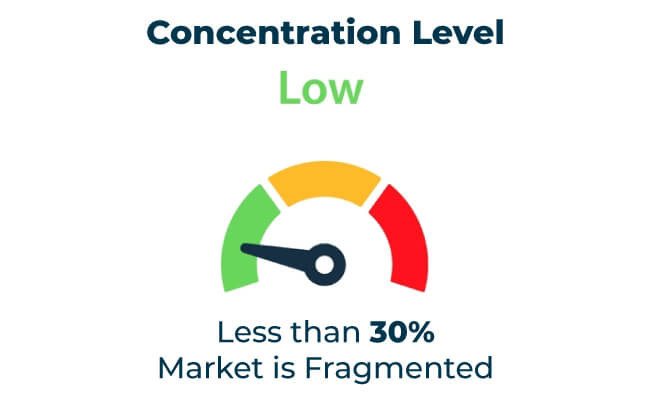The South Korean respiratory inhaler device market is expected to increase significantly and it is forecasted to reach USD 2,480.9 million by the end of 2035. With a CAGR of 6.6% from 2025 to 2035, it is projected to experience rapid growth due to rising prevalence of respiratory diseases, particularly asthma and COPD.
| Attribute | Details |
|---|---|
| Projected Industry Size (2035F) | USD 2,480.9 million |
| Value CAGR (2025 to 2035) | 6.6% |
There has been significant development in new product strategy which is evidenced across all the players in the market for both the disease indication. Other initiatives driving growth is increasing awareness programs by the government related to early diagnosis and treatment modalities have significantly reduced undiagnosed cases and increasing in prescription rate.
Besides, the initiative taken by the market players by creating awareness on the inhalation therapies also create an impact on the overall market. With high number of prescription, retail sales channel have been expanding rapidly, as top e-commerce websites are also pushing inhaler device products that are easily accessible to the clients and enable them to select from various manufacturers options.
Explore FMI!
Book a free demo
| Industry | Growth Trends |
|---|---|
| Pharmaceuticals | Focus on developing smart inhalers and eco-friendly propellants for a sustainable future. |
| Retail | Growth of online platforms offering a wide range of respiratory devices. |
| Healthcare Providers | Adoption of advanced devices for chronic disease management in hospitals and clinics. |

The respiratory inhaler devices market in South Korea is moderately fragmented, with strong competition between international players and domestic manufacturers.
| Vendor Tier | Tier 1 |
|---|---|
| Key Vendors | GSK, AstraZeneca, Boehringer Ingelheim, Sandoz |
| Market Share (%) | 65% |
| Description | Market leaders with a comprehensive range of respiratory care devices |
| Vendor Tier | Tier 2 |
|---|---|
| Key Vendors | Philips Healthcare, Daewoong Pharmaceutical |
| Market Share (%) | 33% |
| Description | Prominent contributors focusing on advanced nebulizer technologies. |
| Vendor Tier | Tier 3 |
|---|---|
| Key Vendors | Local manufacturers |
| Market Share (%) | 2% |
| Description | Providers of generic and affordable inhaler solutions.. |
The South Korean market for respiratory inhaler devices is estimated to grow at a steady growth rate during the forecasted period. The market is majorly driven technological innovation and rising awareness of respiratory health. Smart inhalers with digital connectivity are also playing a significant role in improving treatment outcomes.
More importantly, the environmental-friendly devices would force manufacturers into green technologies, and away from their dependence on propellants in general. In terms of channels, retail would continue to increase, especially with online platforms for convenience and availability to a much wider audience.
South Korea's respiratory inhaler devices market has tremendous growth potential, led by advances in technology, increased prevalence of respiratory diseases, and a shift towards sustainable health care. In this dynamic market, companies can find success focusing on innovation and introducing value for money products. Strong government support and growing awareness among consumers should help the market sustain growth while transforming the future of respiratory care in South Korea.
The market is projected to grow at a CAGR of 6.6% from 2025 to 2035.
The market is expected to reach USD 2,480.9 million.
Combination ICS/LABA inhalers hold highest share of 52.0% and dominated the market.
AstraZeneca, Beximco Pharmaceuticals Ltd., and Boehringer Ingelheim GmBH are few of the prominent players in the market.
GMG Management Market - Growth & Treatment Advances 2025 to 2035
Human Combinatorial Antibody Libraries (HuCAL) Market - Trends & Forecast 2025 to 2035
Dental 3D Printing Material Market Trends, Growth & Forecast by Material, Product, and Region through 2035
Healthcare Digital Experience Platform Market Trends - Growth & Forecast 2025 to 2035
Human Growth Hormone (HGH) Treatment and Drugs Market Trends - Growth & Forecast 2025 to 2035
Healthcare Interoperability Solutions Market Analysis – Trends & Growth 2025 to 2035

Thank you!
You will receive an email from our Business Development Manager. Please be sure to check your SPAM/JUNK folder too.